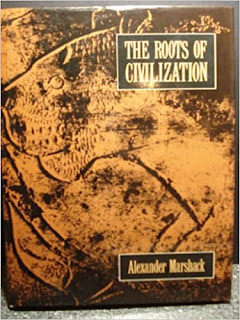I’m attending one of the last panels from w hole week of excellent sessions at the Southwest Popular/American Culture Association. It’s been an outstanding set of panels snd Roundtables. This year online rather than its 40 year history set in Alberquerque. Heated hoping we csn attend in person next year!!!!
Saturday, February 27, 2021
Another Conference Highlight
A Conference Highlight
The relevance of the pandemic with popuar movies is pretty amazing this year at the conference. I am attending one of the last sessions this year. It's been amazing.
Tuesday, February 23, 2021
Christo Interview
This weeks podcast features the archive of Sheila Gregory with an astounding interview with the late international artist Christo. You can find THE AGENCY podcast on iTunes or Spotify. Or click this link on Youtube right here...
Saturday, February 20, 2021
Christo Interview On Podcast
Toronto-based artist Sheila Gregory with Christo in Tribeca 1991. Photo taken by Jeanne-Claude. Find THE AGENCY podcast on iTunes, Spotify or Podbean.
Next week on The Agency podcast, we will be featuring an interview with Sheila Gregory about her experience going to New York in 1991 to interview the late Christo - followed by the resulting interview which first aired on Art on Air on CKLN radio in Toronto. This interview has been sitting on a cassette tape in a drawer since 1991. We've dusted it off and had it digitized so we could bring it to you. I just listened to the full Christo interview and it's fantastic, a real treasure and Iweknow you're going to enjoy it. You can find The Agency podcast on iTunes, Spotify or Podbean. Photos by Wolfgang Volz.
Three Weeks Of Snow Storms
I' grateful that we are as suffering as Txas. It's been so sad watching what people are going through there. We have had a lot of snow here...with very few plows or city workers giving us support on the south side. There have been days where getting to cat-sitting I had to shovel out the car three times. It's been quite a suffocating experience I think especially because of the pandemic. We are already so claustrophobic in our homes...this added to it.
Tuesday, February 16, 2021
Roundtable At Conference Next Week
Suppressed design was an ideal in the Renaissance defined by Baldassare Castiglione. Castiglione coined the word sprezzatura as meaning a “studied carelessness” and "an easy facility in accomplishing difficult actions which hide the conscious effort that went into them.” It is the art that conceals art. There are several artifacts I like to use to demonstrate suppressed design and they include the notches on bones analyzed by Alexander Marshak, the design of stupas, the Antikythera Mechanism, and Edmund Spencer poems read with numerological approaches.
Kent Hieatt describes sprezzatura in Spencer’s Epithamalion as “overly-subtle” information embedded in the poem and “this method requires that beneath a simple literal surface a profound symbolic communication of an integrated continuity should take place covertly, but in a way that reveal itself to the intelligent and sympathetic reader.”
There is a great gap in literary criticism of the structure of contemporary works. By discussing some ancient concepts of Time and Space we can see that there are a few creators, like Cormac McCarthy and Westworld Producers Jonathan Nolan and Lisa Joy working with the idea of art and artifacts as memory palaces. A memory palace is also called a method of loci which is a technique where the subject memorizes the layout of some building, or the arrangement of shops on a street, or any geographical entity which is composed of a number of discrete loci. When desiring to remember a set of items the subject 'walks' through these loci in their imagination and commits an item to each one by forming an image between the item and any feature of that locus. Retrieval of items is achieved by 'walking' through the loci, allowing the latter to activate the desired items. Other contemporary productions portraying utilization of memory palaces include 2010 BBC Sherlock Holmes, the novel Hannibal by Thomas Harris and the World Memory Championships.
Extended Mind Theory, proposing the mind does not only reside in the brain or body but in the world, can help us reinstate valuable aspects of cognition previously dismissed as as non-scientific, therefore relegating human accomplishments from marginalization. I suggest artifacts, literature and visual art are an aspect under-studied in academia and literary criticism yet have some practitioners of this ancient “Magic” today.
Southwest Conference for Popular American Culture Association
Your Honor
Eugene and I have also been watching YOUR HONOR and discussing it here and there on podcast.
The Lady And The Dale
We talked about this documentary on our podcast. It's unbelieveable that this all really happened. One of the things I really liked about this doc was that a lot of it was made with collage.
Dead Reckoning
Here is last weeks podcast. You can find us on iTunes, Spotify, Podbean or click on the youtube square above. Thanks for listening!
Pelican Congeniality
I just realized my podcast is still connecting to my youtube page...so yay! Here is our episode from Feb 2






















